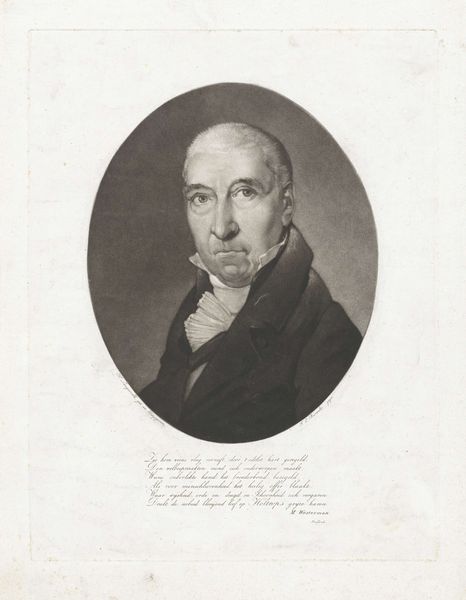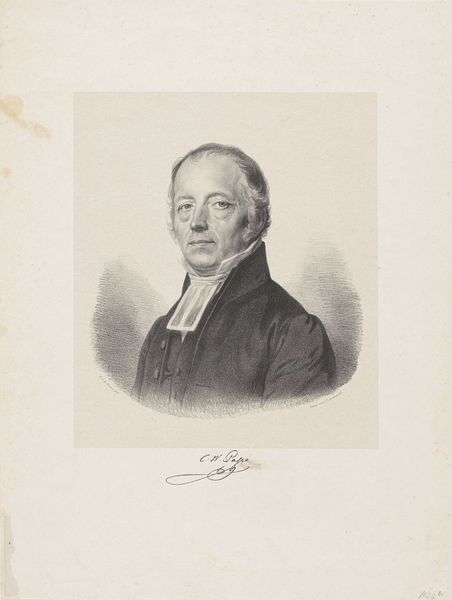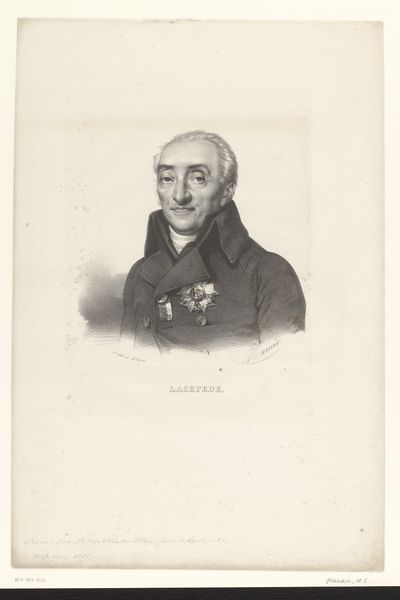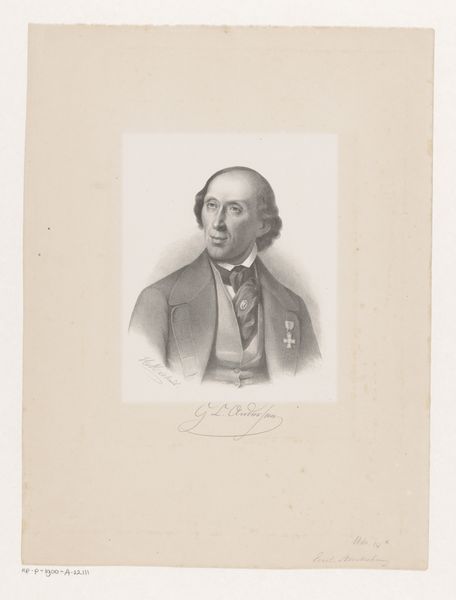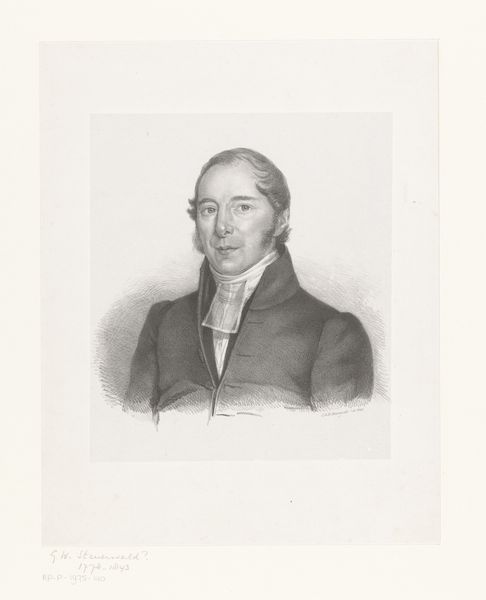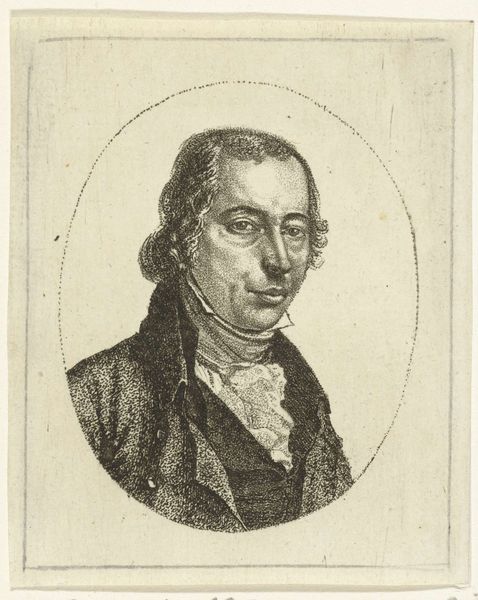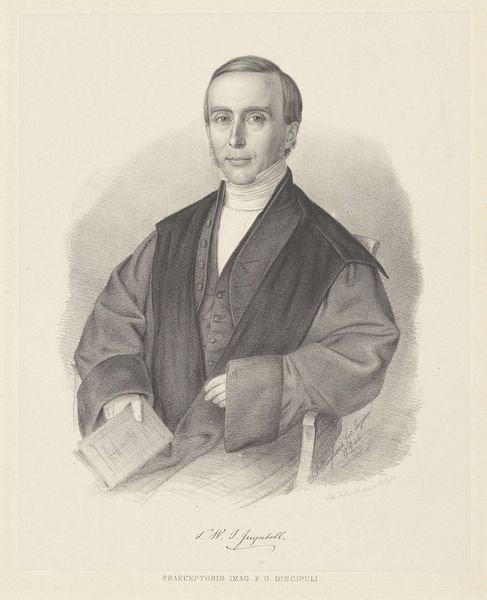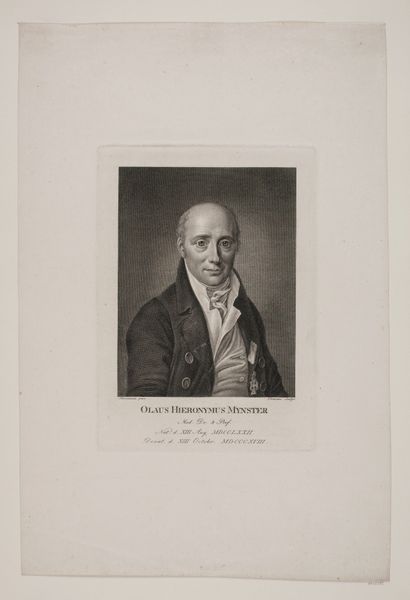
print, engraving
#
portrait
#
neoclacissism
# print
#
form
#
line
#
academic-art
#
engraving
#
realism
Dimensions: height 267 mm, width 205 mm
Copyright: Rijks Museum: Open Domain
Curator: Here we have "Portret van C. Pruys van der Hoeven", dating from between 1792 and 1867, made by Abram van der Horn. It’s an engraving, a print, isn't it? All fine lines and careful detail. What’s your initial impression? Editor: The man's gaze is strikingly direct. A hint of melancholy, or perhaps just profound seriousness, clings to him like the shadows around his collar. Curator: Engravings like this served as a crucial medium for disseminating images and information. Consider the socio-economic function: creating affordable, reproducible portraits, expanding visual access. Editor: I love thinking about this being like, the meme of its day! Can you imagine sending someone a digital scan of *this* on your phone, versus how precious the experience of having this was then. It also feels so *stiff*, like he's fulfilling some kind of social duty here, rather than letting any spark shine. Curator: That stiffness is characteristic of the Neoclassical influence. A move toward order, reason, and, importantly, restraint. We need to examine the impact of industrial advancements, like improved printing techniques on artistic output. Were more people making work at a higher skill? Editor: Okay, Materialist, slow down, I am getting bogged down with your stuff, so my intuitive spark is diminishing here. Just imagine sitting for that engraving. Hours and hours under scrutiny. His eyes look tired; like maybe the artist just stopped for the day so he can catch some sleep, and Abram captures that moment. You wonder about his story. Curator: Precisely! Now you see where my mind is when it comes to material reality! Understanding that socio-cultural reality *is* part of understanding the impact it has as art, since it influences access, perception and production Editor: Well put. You have certainly managed to pull out my thoughts back on track. It's made me reconsider that direct gaze I saw earlier; the power and quiet confidence of the educated. Curator: And considering this was produced by way of industrial advancements… Editor: Ah, yes... it gives the engraving's presence, as this accessible form, this shared cultural understanding, extra meaning now.
Comments
No comments
Be the first to comment and join the conversation on the ultimate creative platform.

